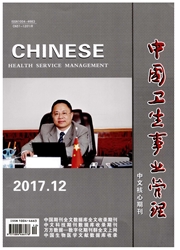

 中文摘要:
中文摘要:
目的:调查居民健康档案和健康教育服务的利用情况,分析评价受益人群和受益程度。方法:受益程度采用Kakawani指数测算;服务利用公平性程度采用集中指数测算。结果:城乡居民健康档案及健康教育服务的建档率、利用率分别为66.6%和99.1%,城乡利用存在差异。不同文化程度居民利用健康档案及健康教育的集中指数分别为0.01和0.0004。不同收入水平居民利用健康档案及健康教育服务的Kakwani指数分别为-0.39和-0.38。结论:农村居民健康档案及健康教育利用受益程度高于城市居民;文化程度较高的居民健康教育与健康档案服务受益程度高;收入水平较低的居民两项服务受益程度高于收入水平较高的居民。
 英文摘要:
英文摘要:
Objective To survey the status of health record and health education utilization, and evaluate the residents' benefit. Methods The benefit was measured by Kakwani index. And the fairness of utilization of health service was measured by concentra- tion index. Results The utilization rates of health record and health education were 66.6% and 99.1% , respectively, which were different between rural and urban areas. The concentration indexes of health record and health education utilization in groups with different education background were 0.01 and 0.004, respectively. And the Kakwani indexes of health record and health education utilization in groups with different income were -0.39 and -0.38, respectively. Conclusion The utilization of health record and health education was more beneficial for rural residents than urban residents. Residents with higher education background had higher ben- efit. And it was more beneficial for people with lower income.
 同期刊论文项目
同期刊论文项目
 同项目期刊论文
同项目期刊论文
 期刊信息
期刊信息
